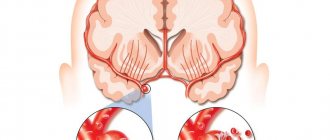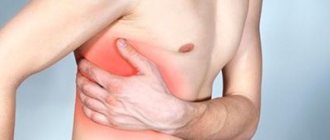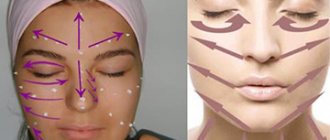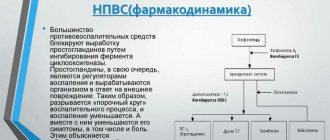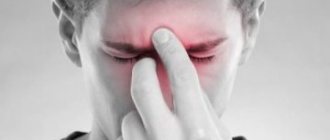What is intercostal neuralgia?
Intercostal neuralgia is a syndrome characterized by the appearance of severe pain in the space between the ribs . The pain occurs due to compression of the nerve endings that pass between the ribs.
The nerves passing between the ribs cause intercostal neuralgia when they are compressed and inflamed
Neuralgia may be:
- radicular, in which the nerve fibers passing in the spine are pinched;
- reflexive, it is caused by muscle spasm in the space between the ribs.
The disease is not life-threatening, but significantly worsens its quality. After all, due to the pain syndrome, the patient sleeps poorly, his irritability increases, and hypertensive crises may occur.
How does massage work?
Massage for neuralgia:
- relieves pain (pain is relieved after the first session);
- reduces inflammation;
- normalizes metabolism;
- relaxes muscles;
- warms up tissues;
- activates blood circulation;
- accelerates recovery processes;
- restores the passage of nerve impulses;
- enhances the effect of drugs;
- removes toxic substances from the body;
- mobilizes the body's internal reserves;
- improves general condition.
What are the main methods of treating intercostal neuralgia?
If pain occurs in the intercostal space, you should contact a neurologist as soon as possible. The doctor will assess the condition and select the most appropriate treatment tactics. Most often, drug treatment is prescribed.
Doctors prescribe injections and ointments, tablets that help relieve inflammation and relieve pain. At the same time, B vitamins are prescribed, which have a positive effect on the condition of nerve endings.
In addition, neurologists prescribe:
- physiotherapy;
- wearing belts and corsets that limit mobility;
- massage;
- exercise therapy;
- manual therapy;
- reflexology.
In advanced cases, surgery is recommended.
Prevention
There are several important principles that can be followed to prevent the development of the disease:
- Regular physical activity.
- Balanced diet.
- Correct body position at the table, straight posture.
- Avoid long static poses, do a short warm-up every 30-60 minutes.
- Quitting bad habits: alcohol and smoking.
- Avoid hypothermia.
- Learn to properly cope with stressful situations.
The use of massage for intercostal neuralgia
Massage is an independent therapeutic tool that can be used to reduce the severity of pain. But it is often used as one of the components of complex treatment . It is combined with medication, physiotherapy, manual therapy, and exercise therapy.
Before prescribing a massage, the patient must be examined. If the cause of pain is a tumor, then massage procedures are contraindicated. Due to increased blood flow, the tumor may begin to grow faster.
What are the benefits and how massage can help with intercostal neuralgia
With massage you can:
- strengthen the muscle corset;
- eliminate muscle tightness;
- improve blood flow in tissues;
- stimulate local metabolic processes.
The main benefit of massage is the elimination of muscle spasms, which contribute to pinched nerves.
The main cause of severe pain is muscle spasm , because of which the pain goes from acute to chronic. Massage allows you to remove spasm , thereby reducing the severity of pain.
When can you have a massage?
Massage procedures are prescribed only after the acute stage of the disease has passed. The patient should not complain of severe pain that interferes with speaking, inhaling deeply, or bowel movements. .
If you consult a doctor in a timely manner and prescribe adequate treatment, 4-5 days pass from the moment severe pain appears until the acute stage subsides. After this, the doctor can give a referral to a massage therapist to consolidate the effect obtained from drug therapy. Often, drug treatment continues and can be combined with medication.
Contraindications to the use of massage for intercostal neuralgia
Before prescribing treatment and massage, the patient is sent for a comprehensive diagnosis. The doctor needs to find out the reason why the nerve roots are pinched. In some pathologies, massage is prohibited.
Massage is not prescribed in such cases:
- acute infectious and inflammatory processes, due to increased blood flow, the infection spreads throughout the body;
- purulent skin lesions, dermatological diseases;
- severe exhaustion of the body;
- high blood pressure, hypertension;
- oncological diseases;
- mental illness;
- epilepsy;
- hereditary blood diseases in which there is an increased tendency to thrombosis and bleeding (thrombophlebitis, severe atherosclerosis, hemophilia, hemorrhagic vasculitis);
- disruption of intestinal function (dysbacteriosis, diarrhea).
In such situations, massage can worsen the patient's condition.
Video: “How to treat intercostal neuralgia at home?”
Pay attention to the following material:
- How and what kind of massage is given to children with scoliosis?
- You can read about the principle of correcting kyphosis with the help of massage and its benefits in general on the page
- What massage techniques are used to eliminate sciatica are described in the following article
- Instructions for performing massage for osteochondrosis of the thoracic region can be found here
- To find out if you can massage a bulging disc, go here
Massage for sciatica
Recipes and recommendations
The most popular folk remedy is pepper plaster.
The painful area of skin is wiped with alcohol and wiped dry, after which a patch is attached. You need to hold it until the warmth spreads throughout your body. Pepper patch warms up joints well and is easy to use. For effective treatment, you need to do gymnastics in the mornings and warm compresses in the evenings. So, 2 teaspoons of ginger, half a teaspoon of dry chili, 1 teaspoon of turmeric, poured with warm water, heated to body temperature and mixed, form a long-lasting compress. You need to tighten it with a cotton cloth and hold it for as long as possible. Only regular use will bring results.
A decoction of chamomile has a life-giving effect. Prepared in a water bath and consumed three times a day, it fights intercostal neuralgia from the inside. Herbal preparations such as:
- immortelle flowers;
- lemon balm foliage;
- orange peel;
- valerian;
- peppermint.
And many other medicinal plants. For greater effect, you should add a spoonful of honey to the decoction, you need to drink it for a month or two, with a break of 10 days. Decoctions are listed that need to be consumed orally, but there are also infusions that are beneficial externally. This refers to the common barberry, in particular, its roots and bark are boiled for 15-20 minutes and the painful areas are rubbed with the resulting slightly cooled raw material.
Flax or wormwood seeds in bags are effective. In combination with olive or sea buckthorn oil, they should be steamed and then applied to the sore spot. Once you start any procedures, they should not be interrupted. The minimum course of home therapy is 10 days.
It is very effective and useful during therapy to take baths every day before going to bed with the addition of decoctions, sage, for example. About 4-5 tablespoons of dried sage should be poured into two glasses of boiling water, left for an hour and poured into a bath of warm water. The same ratio of sea salt in the bath is welcome; this combination will relieve pain and relax muscles.
Among the medicines, mumiyo helps in the treatment of neuralgia. The alcohol tincture is rubbed into the affected areas of the body almost every minute.
Those patients who have indoor geranium growing in their home will be able to appreciate its bactericidal and stimulating properties. Fresh leaves are applied to the site of pain and warmly bandaged with natural fabric. The leaves need to be changed every 2-3 hours.
Treatment with folk remedies is varied in composition and action, but is equally aimed at relieving pain and symptoms of intercostal neuralgia. It is necessary to use exercise therapy (a complex of physical therapy), massage, keep the diseased areas warm and observe the dosage of all medications used.
Only a chiropractor should correct physical exercises for intercostal neuralgia, since awkward movement can harm the spinal joints.
Types of massage used for intercostal neuralgia
After severe pain subsides, the patient can go to the massage therapist. To alleviate the condition and reduce pain, the specialist will knead the back and chest. Patients are prescribed therapeutic or acupressure massage.
Classic therapeutic massage procedures allow:
- stimulate blood flow in small arteries and capillaries;
- warm up the skin and tissues that are under it;
- strengthen metabolic processes;
- improve the functioning of the nervous system, the conduction of nerve impulses;
- speed up the process of removing toxins and other substances that are involved in the inflammatory process.
When performing acupressure, a specialist acts on biologically active points . Finger piercing, pressure, kneading, and nail pricking are used. To reduce the severity of pain, use strong and medium-duration exposure from 2 to 5 minutes.
Points affected during thoracalgia
Diagnostics
The main thing is to distinguish this pathology from diseases of the cardiovascular and digestive systems.
A neurologist can correctly differentiate neuralgia. Unlike heart diseases, intercostal neuralgia has characteristic symptoms: increased pain with movement, lack of effect from cardiac medications, for example, nitroglycerin. Additionally, an ECG or ECHO KG is performed according to indications. Pain in the chest area when coughing resembles pneumonia. To avoid missing this pathology, a chest x-ray may be required.
It is better not to self-medicate, as there is a risk of missing a serious illness. A competent doctor, using the necessary medical equipment, will make a diagnosis correctly and quickly.
Technique and features of implementation for intercostal neuralgia
Did you know that...
Next fact
The massage is done in the back and chest area . Before starting it, the massage therapist must clarify on which side and at what level the painful sensations are concentrated.
Begin the massage on the opposite side from the place where the pain is concentrated . The specialist gradually moves from healthy areas to problematic areas. The massage therapist begins to work on the affected area after the 3rd session.
If intercostal neuralgia provokes the appearance of pain on both sides, then the treatment begins from those places where the discomfort is less pronounced. The massage is done as carefully as possible the first time. Over time, the intensity and strength of the impact can be increased.
To perform a massage, the patient is first placed on a massage table on his stomach . A special pillow is placed under the chest. After complete treatment of the back, the patient turns over, the specialist continues to massage, working on the muscles of the chest.
For intercostal neuralgia, about 10-15 massage sessions are usually prescribed. Most people experiencing intercostal neuralgia are prescribed 10-15 sessions . The duration of the first of them should not be more than 15 minutes. Over time it increases.
In the absence of contraindications, warming ointments are used. Pain-relieving ointments and gels can be applied to problem areas after the massage is completed.
To carry out the massage, the patient is placed on his stomach, and his arms are asked to be extended along the body. First, the back is stroked with both hands on both sides. The movement is repeated 7–9 times.
Then they begin squeezing on the healthy part of the back. Make it with the edge of the palm. The movement occurs in the direction from the long dorsi muscle down towards the couch.
Having completed this combined stroking, the massage therapist can proceed to kneading. The procedure begins with the long muscles of the back.
Experts recommend performing it according to this scheme:
- kneading with 4 fingertips (repeat 3-4 times);
- stroking with 2 hands (2–3 times);
- impact with the finger phalanges, while the palms are clenched into a fist (3–4 times).
The kneading ends with stroking to soothe the sore muscles.
After treating the long back muscle, they move on to the latissimus.
To warm it up and warm up, use the following techniques::
- ordinary kneading (3-4 times);
- shaking, carried out in the direction from the iliac crests to the armpits (2-3 repetitions);
- double ring kneading (3-4 times);
- shaking (2-3 times);
- stroking (3 times).
The complex on the healthy side is repeated 2-3 times, then the massage therapist can move to the sore side. The impact on it should be less intense. You should focus on the patient’s well-being.
The techniques described are the preparatory stage of massage. After it is carried out, they proceed to rubbing the spaces between the ribs where pain is felt. It should be carried out in the direction from the spinous vertebral processes along the spaces between the ribs, through the long back muscle. The massage therapist should use his fingertips to get into the grooves between the ribs to the maximum depth. Treatment begins from below the waist.
After completion, the patient is asked to turn over on his back. The development of the pectoral muscles begins with stroking and squeezing movements (3-4 repetitions).
Then the following complex is performed:
- shaking (2-3 repetitions);
- kneading (4–6 times);
- alternating stroking and shaking (3 times).
After completing the warm-up of the pectoral muscles, proceed to the intercostal muscles . The massage therapist rubs in a circular, zigzag, straight line direction from the sternum to the pectoralis major muscle (up to the breast gland in women), then he moves down to the back. Each technique is repeated 3-4 times.
Familiarize yourself with the technique and sequence of massage procedures for thoracalgia. Afterwards, the massage therapist should rub the subcostal angle . When performing a massage, the fingers are positioned so that 4 of them go deep under the hypochondrium, and the thumb remains on top. Rub them from the center of the sternum down to the couch. After 3-4 repetitions, stroking, squeezing, rubbing, kneading movements are performed on the treated area. Repeat them 2-3 times.
The anterior and lateral parts of the chest are massaged separately. The specialist should work by stroking and squeezing the pectoralis major muscles, the movements are repeated 3-4 times. Then he rubs the intercostal spaces in the direction from the sternum to the back. You need to move your hands as far as possible.
Repeat straight, spiral, circular, zigzag rubbing 3-4 times, which is done with the pads of 4 fingers. After rubbing, begin squeezing with the heel of your palm along the ribs. Then alternate stroking and squeezing movements.
After completion, carry out ordinary kneading (4 times) , kneading with the finger phalanges, while the palms are clenched into a fist (3 times). These movements alternate with stroking and shaking (2 times each).
After completing this complex, they begin to rub the spaces between the ribs . To do this, the hand on the treated side is placed behind the head, and the massage therapist performs the following movements:
- zigzag stroking along the ribs towards the iliac fossa, along the torso (3-4 repetitions);
- squeezing with the bases of the palms (5 repetitions), movements are directed along the ribs;
- straight, zigzag rubbing (each 3-4 repetitions);
- squeezing (3 times).
After this, the patient should take a deep breath several times, leaning to the healthy side, clasp his hands, raise his arms up and lower them to his hips. To complete the procedure, the patient turns on his stomach, and the massage therapist strokes, squeezes, shakes, and kneads the latissimus dorsi muscle.
During the massage or after its completion, you can use warming ointments and creams..
Video: “Massage for intercostal neuralgia: technique”
Rules for massage
Before starting therapy, consultation with a neurologist is necessary. The massage must be performed by a medical professional with the appropriate certificate.
When affecting the body, several rules must be followed:
- measure blood pressure before and after the session;
- increase the duration of the procedure gradually;
- start the session with stroking;
- do not make sudden movements;
- massage should cause a feeling of relaxation, languor and drowsiness;
- After the procedure, the patient must be covered and left to take a nap for 20-30 minutes.
Benefit and effect
The main goal of massage is to eliminate pain . This happens due to the fact that the muscles in the affected area relax.
Tight muscles interfere with normal blood circulation. Massage reduces pressure on nerve endings. When blood circulation returns to normal, inflammation decreases and pain goes away.
Also, therapeutic massage has the following beneficial effects:
- improves metabolic processes in the body;
- restores the functions of damaged nerves;
- relieves stress and tension;
- improves the general condition of the patient.
Massage is an excellent therapy against intercostal neuralgia . However, it will only help if complex treatment is carried out, which includes physiotherapy and medication. There will also be a positive result if you carry out the procedures regularly and follow the described rules.
Yoga
It is acceptable when acute attacks of pain have already been stopped. Exercises are not intended for a sick body and can make the situation worse.
In addition, asanas (yoga poses) require proper breathing, sometimes abdominal breathing is needed, and sometimes chest breathing. It is better to breathe while relaxing your abdominal muscles to relieve stress from the intercostal spaces.
Staying in an uncomfortable position for a long time, which is typical for yoga, can cause spasms or lumbago.
Based on all that has been said above, we can conclude that it is advisable to do yoga for intercostal neuralgia under the supervision of a specialist, and if this is not possible, then before starting yoga you should undergo a course of exercise therapy and make sure that there is no pain.
Simple asanas:
- Tadasana. Place your arms along your body, connect your heels, straighten your chest, tighten your stomach. Stay in this position for several minutes. Abdominal breathing. This asana is aimed at restoring the energy of the body.
- Vrikshasana - from the tadasana pose, raise your arms, join your palms, throw your head back (as far as possible), bring your shoulder blades together as much as possible. Hold the pose for as long as possible. Abdominal breathing.
- Varibhadrasana - standing with a straight back, place your palms near your chest, legs slightly apart. Turn your body slightly to the side, raise both arms and one leg. The back should be arched. Hold this position for a few seconds, then repeat the exercise in the other direction. Breathing while performing the asana is abdominal.
- Bhujangasana - snake pose. Lie on your stomach, while inhaling, lift the front of your body, and while exhaling, bend back. This asana strengthens the muscles of the entire spine. Abdominal breathing.
- Ardha navasana - half boat pose. From a lying position on your back, simultaneously raise your straight legs and body. Pull your arms forward. The pelvis and lower back are pressed tightly to the floor. Hold the pose for 5 seconds, then lower your body and legs to the floor and relax. Repeat 2-3 times. This pose is very good at relieving tension in the pectoral muscles. Abdominal breathing.
We advise you to study - What to do with protrusion of discs l5 s1 and l4 l5?
Video about yoga for intercostal neuralgia - pain when inhaling, under the shoulder blade:
Neuralgia - specialists in Moscow
Choose among the best specialists based on reviews and the best price and make an appointment with
Neurologist
Tugutov Alexander Viktorovich
Moscow, prosp. Mira, 79, building 1 (Oriental Medicine Clinic “Sagan Dali”)
+7
0 Write your review
Neurologist
Zhdanov Igor Vyacheslavovich
Moscow, Landyshevaya st., 14, bldg. 1 (Medical)
+7
0 Write your review
Neurologist
Neuralgia - clinics in
Choose among the best clinics based on reviews and the best price and make an appointment
Family
Medical
Moscow, Landyshevaya st., 14, bldg.
1 Pyatnitskoe highway
+7
- Reception from 770
- Manual therapy from 1200
- Neurology from 1200
0 Write your review
Family
Clinic "Your Health Plus"
Moscow, Orekhovy pr., 11, entrance from the yard (from the children's playground)
Shipilovskaya
+7
- Consultation from 1850
- Reflexology from 2000
- Neurology from 500
0 Write your review
Family
Clinic "Cecile"
Moscow, Kalanchevskaya st., 17, building 1
Komsomolskaya (KL)
8
- Reception from 1200
- Neurology from 650
- Shock wave therapy from 5000
0 Write your review
Show all Moscow clinics
